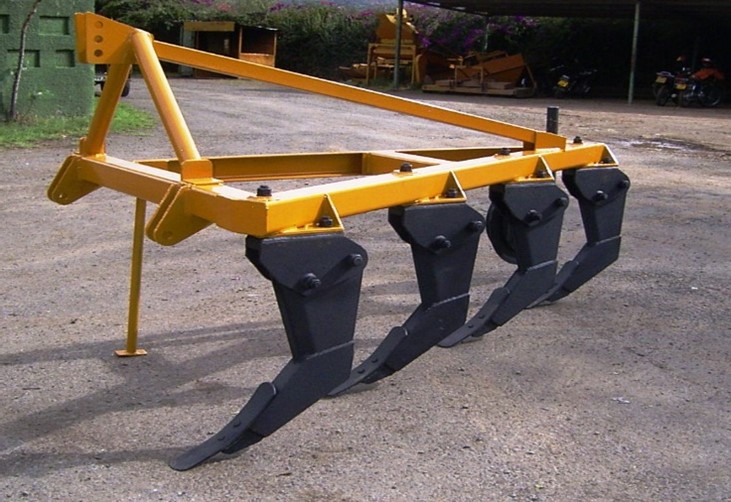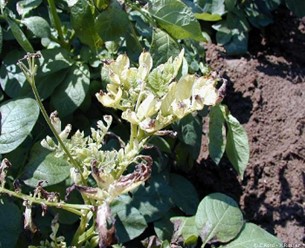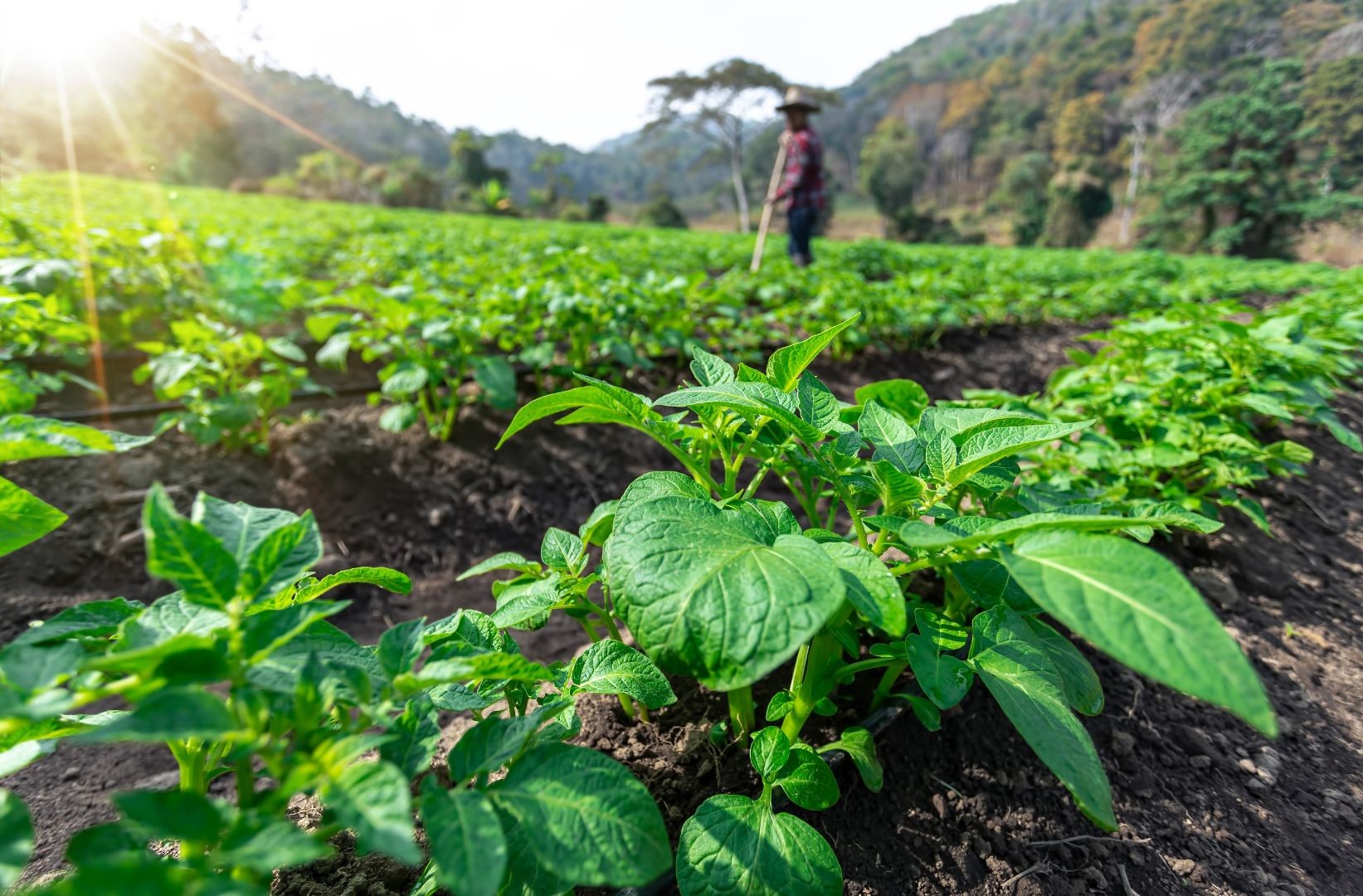Potato Weed Management Practices in Kenya
Management of weeds is crucial in potato production; if not properly managed, weeds can lead to significant crop yield reduction and can host pests, diseases, and viruses (that can be transmitted to the crop, creating more problems). Weeds can compete with potato plants for light, water, and nutrients.
A potato weed management program should follow the principles of Integrated Pest Management (IPM). IPM is a pest management strategy that integrates preventative, cultural, mechanical, biological, and chemical (herbicides) control methods to achieve higher, long-term efficiency and a sustainable production system that balances economic, health, and environmental concerns. IPM is based on dynamic principles that vary from farm to farm or even from field to field. When planning a weed management program, producers must first identify the weed issues present within a field before deciding on the best control method(s). By knowing the weeds in your fields, you can gather information on their life cycle and biology and better understand how certain weeds reproduce and survive and what is required to control them.
After gathering the information through proper identification and scouting, you can decide whether or not a weed should be targeted for control. Knowledge of the specific weeds present in each potato farm (weed history) allows the selection of the best treatment for each field. If action is required, it is important to choose methods that optimize costs and effectiveness of control while minimizing any adverse effects.
The following are the most common weeds found in Kenya fields: pigweed, Bidens pilosa, Wild oats, Cleavers, Oxalis spp, Sow Thistle, Gallant Soldier, Bindweed, Mallow, nutsedge, Brome Grass, Ryegrass, Eragrostis, Eleusine indica, Cynodon dactylon, Eleusine multiflora, False Star Grass.
We have different methods of managing weeds, such as mechanical, herbicide, and cultural methods. These methods depend mainly on the type of weeds on the farm. We have different types of weeds, i.e., annual grasses, perennial grasses, and broadleaves. Certain types of weeds can be managed during land preparation. The recommended land preparation for potato production is deep plowing or chiseling using a chisel plow.
Weeds such as the nutsedge are challenging to manage and can be controlled/ reduced during land preparation. The most economical and effective potato weed management program combines cultural, mechanical, and chemical (herbicides) weed control practices.
Mechanical weed management in a potato field
Mechanical weed control is an effective tool for controlling annual weeds. If performed under the wrong conditions, tillage can have a negative effect on the efficiency of harvesting operations, yield, and quality. The main objective of hilling is to provide sufficient soil for tuber set and development. A proper hill will also prevent greening, minimize infection with late blight, minimize frost damage, and facilitate harvest.
Farmers can control weeds mechanically during planting by allowing them to germinate and control them during planting. As the planter places the seed on the farm, it opens the soil, disrupting the germinated weed. This process destroys weeds and reduces them significantly. Pre-plant tillage can be used to control early-season weeds. Shallow cultivation of the field 2-3 days before potatoes emerge can provide control of small emerged annual broadleaf weeds and grasses. After germination, hilling is the only post-planting tillage operation necessary to produce potatoes. Farmers can use a ridge for hilling and as a weed management method. The main reason for ridging/hilling is to provide enough soil to cover the potatoes just before they produce tubers.
This reduces weeds in potato farms before the formation of a dense canopy. Certain potato varieties mature more quickly, so farmers must confirm the maturity time to plan appropriately before ridging to avoid damaging their potatoes. Smallholder farmers commonly use manual laborers or oxen-pulled plows to earth up and cover the potatoes. 
This is done twice; the first ridging is done on the third week after germination. This is during top dressing and the second fertilizer application. The second ridging is done in the sixth week, just before the canopy formation. This is done before the formation of tubers and ensures that the potatoes are properly covered with soil. This process reduces weeds just before a closed crop canopy is formed as the crop grows vigorously. The canopy formation (close of the lines between plant rows) gives the crop the desired ability to suppress the weeds.
Chemical weed management
Herbicide weed control is the most cost-effective method. However, this should be used extremely carefully due to the long-term environmental significant impact. Farmers should be taught how to use these products, and more emphasis on self-protection while using herbicides. The usage and handling of these herbicides by smallholder farmers is alarming.
There are two main ways of using herbicides to manage weeds:
- The pre-emergence: this is the management of weeds before they emerge or germinate.
- The post-emergence: the management of weeds after they have germinated.
Farmers can use pre-emergence weed control herbicide products. These products suppress the germination of weeds, allowing potatoes to germinate on a weed-free farm. It is important to ensure that farmers read and understand the information before using the herbicide product.
An example of such a product registered here in Kenya by the Poison Control and Produce Board of Kenya for the control of weeds in potato fields is Metribuzin. This herbicide is commonly used as a pre-emergence weed control and has the ability to suppress certain weeds. It is important to note that certain varieties are sensitive to this herbicide; therefore, farmers should observe timely application. It is important to note the conditions under which farmers use these products because most require wet soil for maximum benefits. Farmers should be careful as certain herbicides can leach and cause long-term disadvantages. Farmers must consider long-term effects when choosing to use pre-emerge weed control methods.
The second herbicide method is the use of post-emerge herbicide. This method requires the weeds to have germinated since the herbicide has to be in contact with the weed. These products can be used when the potatoes have germinated. It is important to note that certain varieties are sensitive to herbicides and can be scorched.
Farmers need enough information on the varieties before considering using herbicide products. Equally, the growth stage of the weed should be considered to ensure that we have effectively managed the weed. Most post-emergence weed control products perform best at the 2 to 5-leaf stage. These products are selective, and farmers must ascertain which weeds are targeted for effective weed control.
Please note
- Farmers are required to use personal protective equipment when handling herbicides.
- These herbicides harm them and the environment and should be disposed of properly.
- Please do not spray herbicides on waterways
- No children should be allowed within the farm while spraying
- Herbicide use is cost-effective but should be used as the last result.
Further reading
The Importance of Using Certified Potato Seeds
The Potential Impact of Generative AI on the Potato Industry
Soil Health and Potato Yield: Cultivating a Sustainable Future from the Ground Up
Technological Innovations that Revolutionize the Potato Industry
The Impact of Climate Change on the Potato Industry and Possible Solutions
Hybrid Potatoes – A Climate-Smart Solution for Potato Farmers











































































